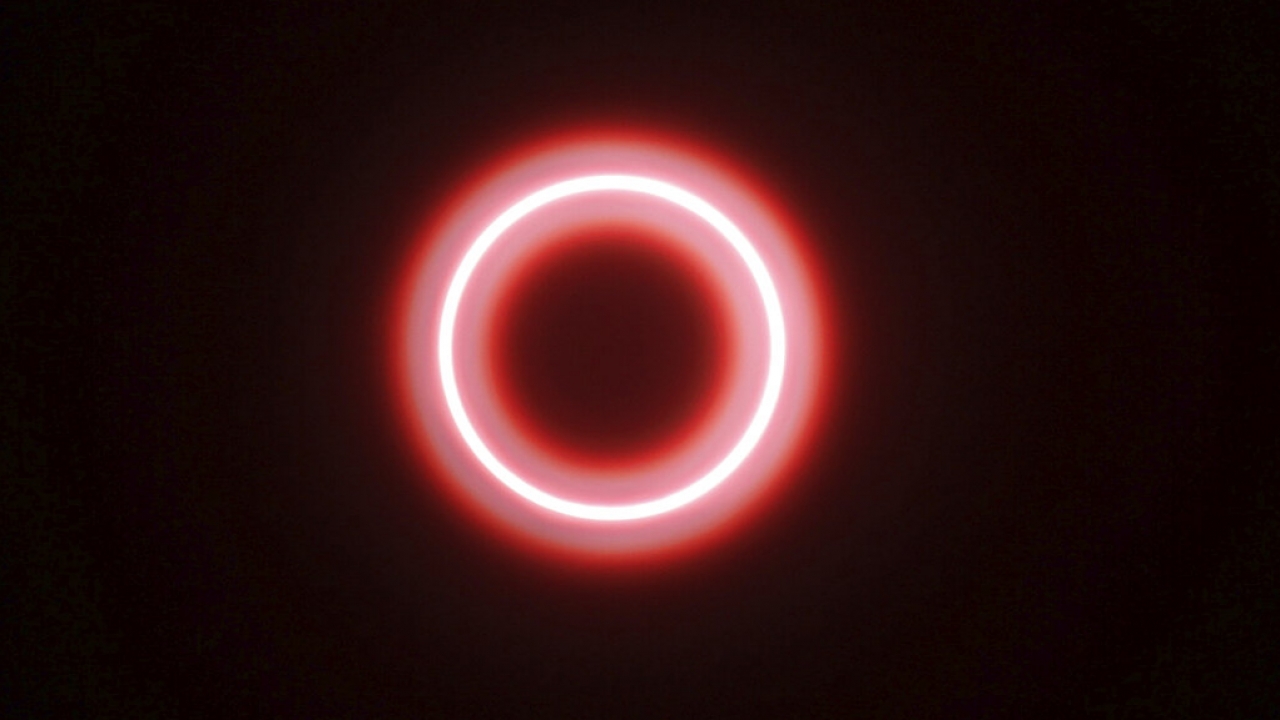An annular solar eclipse will occur on Oct. 14. On this day, the moon will pass directly between the Earth and the sun.
Parts of the U.S., Central America and South America will have the best views.
The annular eclipse will first begin in the morning hours in southwest Oregon. From there, the path of the eclipse travels southeast through Nevada, Utah, New Mexico and Texas.
Everywhere else in the U.S. will see a partial eclipse of varying degrees during the event.
 NASA
NASA
When does the eclipse start?
The eclipse begins on the West Coast during the morning hours and travels southeast.
NASA shared the exact local times the eclipse will begin and end in different cities in the path of the eclipse:
- Eugene, Oregon: 8:06 a.m.-10:39 a.m., maximum at 9:18 a.m.
- Alturas, California: 8:05 am.– 10:43 a.m., maximum at 9:20 a.m.
- Battle Mountain, Nevada: 8:06 a.m.–10:48 a.m., maximum at 9:23 a.m.
- Richfield, Utah: 9:09 a.m.–11:56 a.m., maximum at 10:28 a.m.
- Albuquerque, New Mexico: 9:13 a.m.– 12:09 p.m., maximum at 10:35 a.m.
- San Antonio, Texas: 10:23 a.m.–1:33 p.m., maximum at 11:54 a.m.
From the beginning of the partial eclipse to the end of the partial eclipse, the event will last about two and a half hours.
The length of the annular eclipse — when most of the sun is blocked — is a small window. It will only last about four minutes.
What is an annular solar eclipse?
There are three types of solar eclipses: total, annular and partial.
A solar eclipse of any kind occurs when the sun, the moon and the Earth line up exactly in that order. Because of the moon’s proximity to Earth, it blocks some or all of the sun and casts a shadow on the Earth.
Exactly how the sun, moon and Earth line up and how much of a shadow is cast determines what type of eclipse we see.
A total solar eclipse is the rarest type of eclipse, and these occur when the moon completely blocks out the sun, resulting in a moment of almost complete darkness.
Partial eclipses are the most common. These happen when the moon only blocks a part of the sun.
This October’s solar eclipse is an annular eclipse, and these occur more often than total eclipses but less often than partial eclipses.
An annular eclipse occurs when the moon moves directly in front of the sun, but the outer ring of the sun is still visible around the moon. This is why annular eclipses are sometimes called “Ring of Fire” eclipses.
These occur because of the changing distances between the Earth, the moon and the sun.
How to safely view the eclipse
It’s never safe to look directly at the sun without specialized eye protection.
Solar viewers and solar eclipse glasses are the most common ways to watch a solar eclipse. These are not the same as sunglasses, no matter how dark they are.
Eclipse watchers can also look at the eclipse using an indirect method, which involves projecting an image of the eclipse onto another surface.
When using a camera, binoculars, telescope or something else similar, observers need special-purpose solar filters to avoid any kind of eye injury.
You can also watch NASA’s livestream of the eclipse on YouTube from 11:30 a.m. ET to 1:15 p.m. ET.
If you’re not able to get to a place where you can see this eclipse, the next total solar eclipse is on April 8, 2024, and the path of totality travels across a large portion of the U.S.
This story was originally published by Jason Meyers at Simplemost.com.







